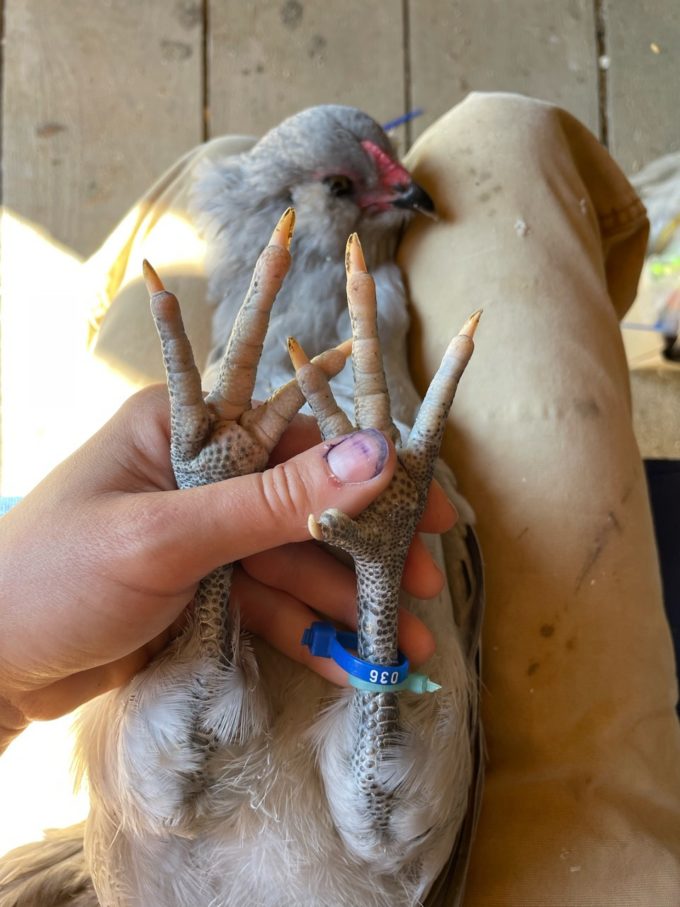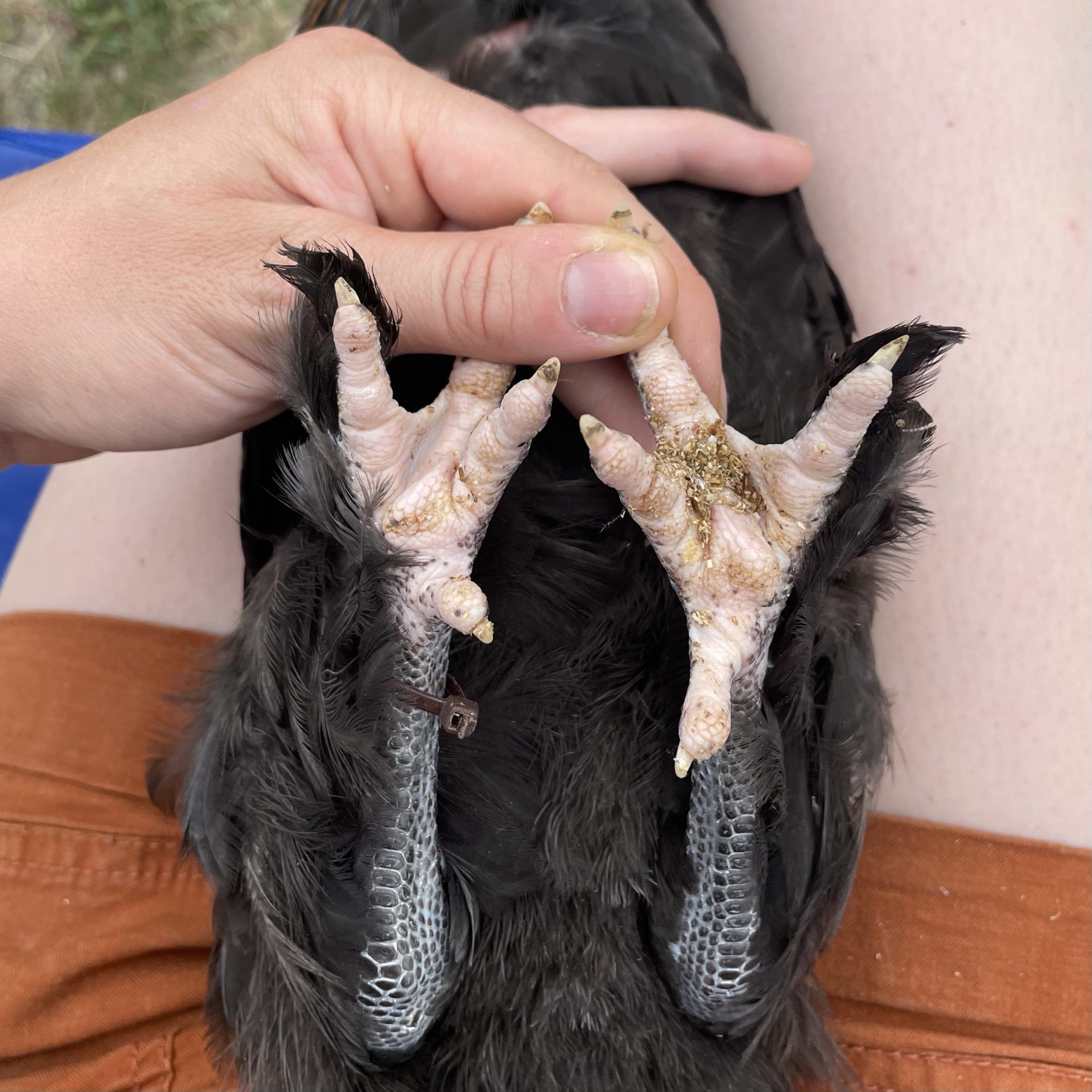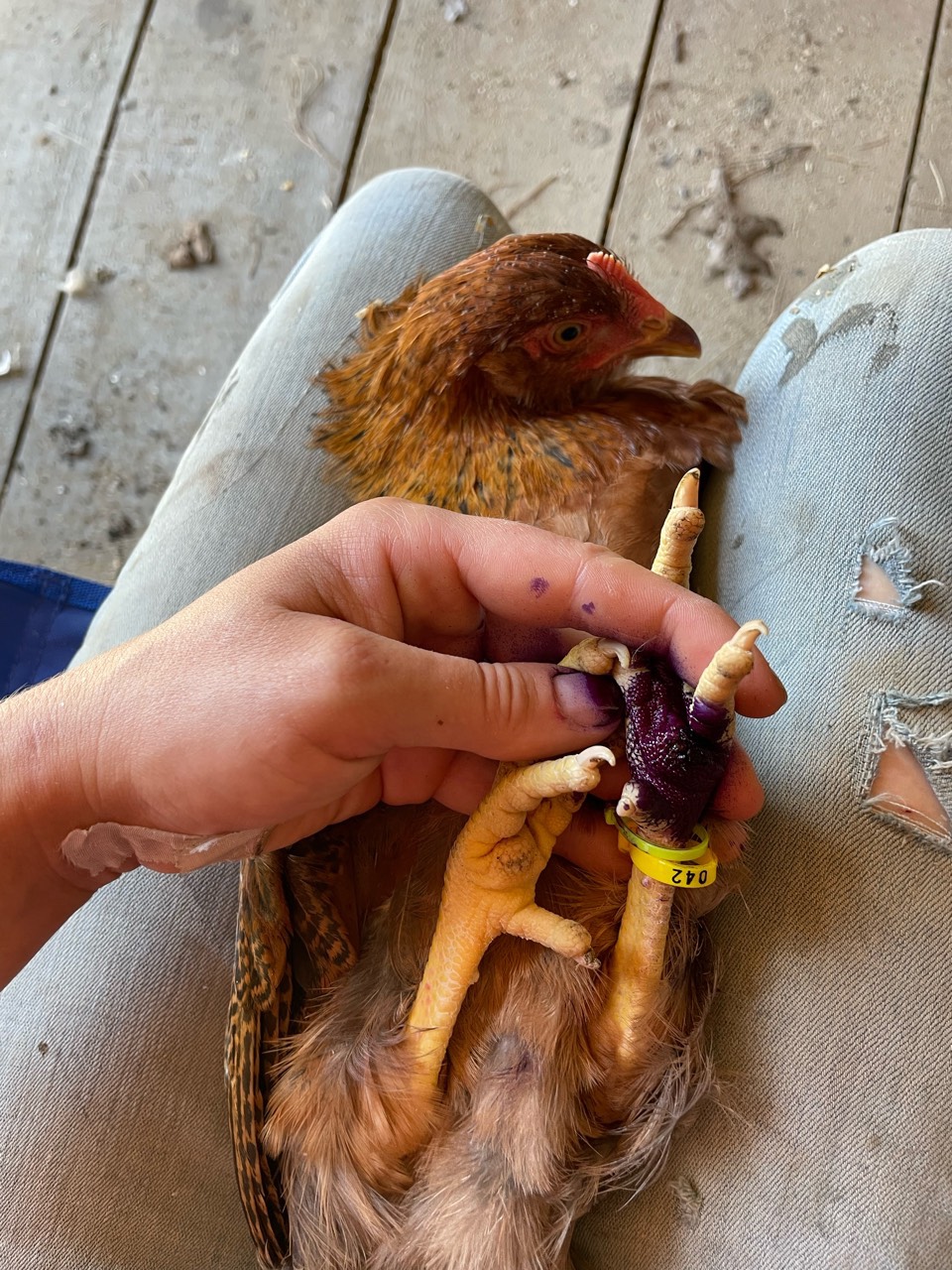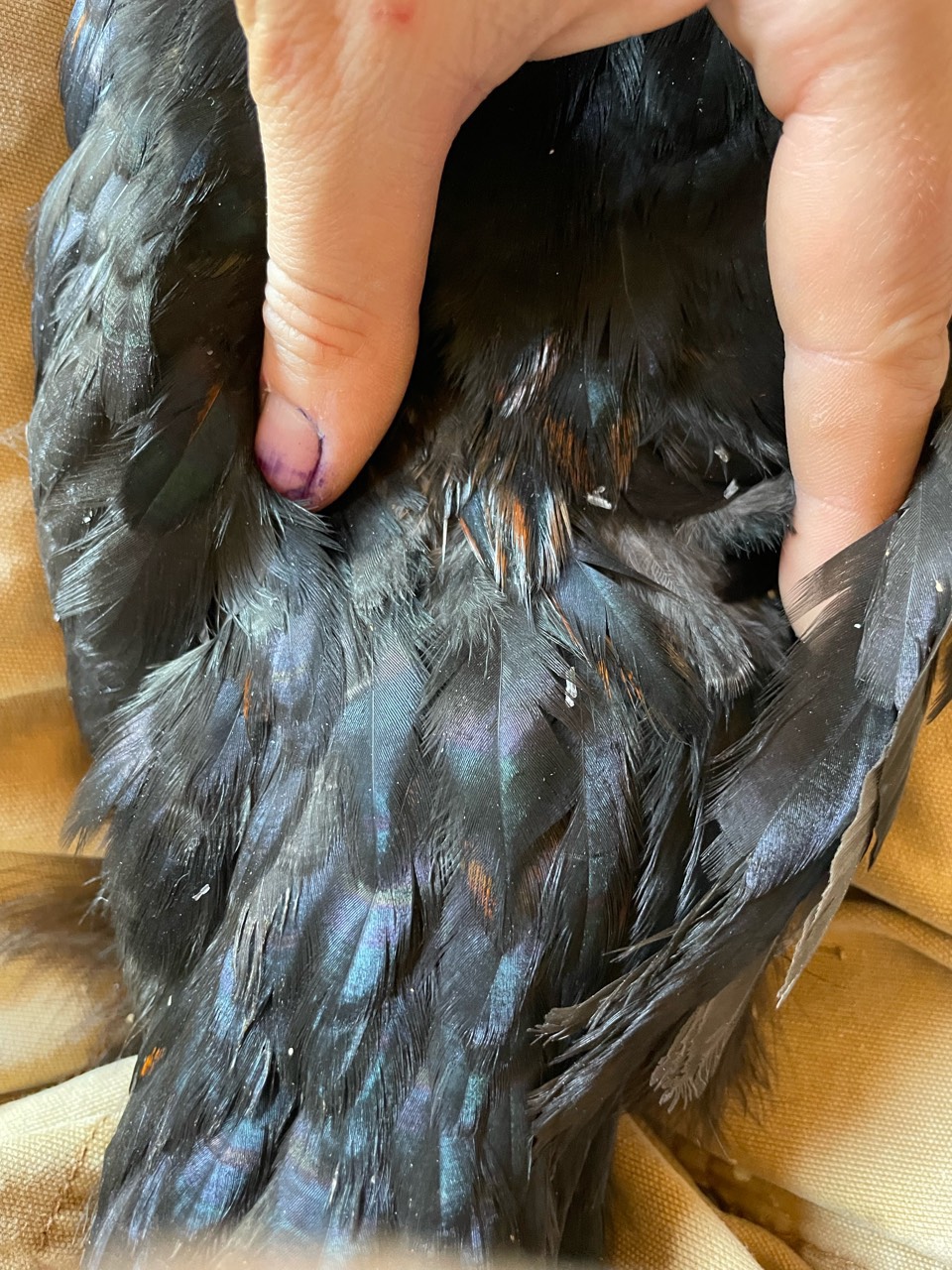Leg bands are used for many reasons. This article will show you how to put a leg band on a chicken as easily and stress-free as possible.
Prepare
Before you hone in on a chicken and make a plan to nab it, lay out everything you need.
- Bands
- Wire snips
- Jar to collect band ends in
- Blu Kote
- Comfortable seat
- A way to record information (I use my phone)
- A post-banding area
What type of band should I use on my chicken?
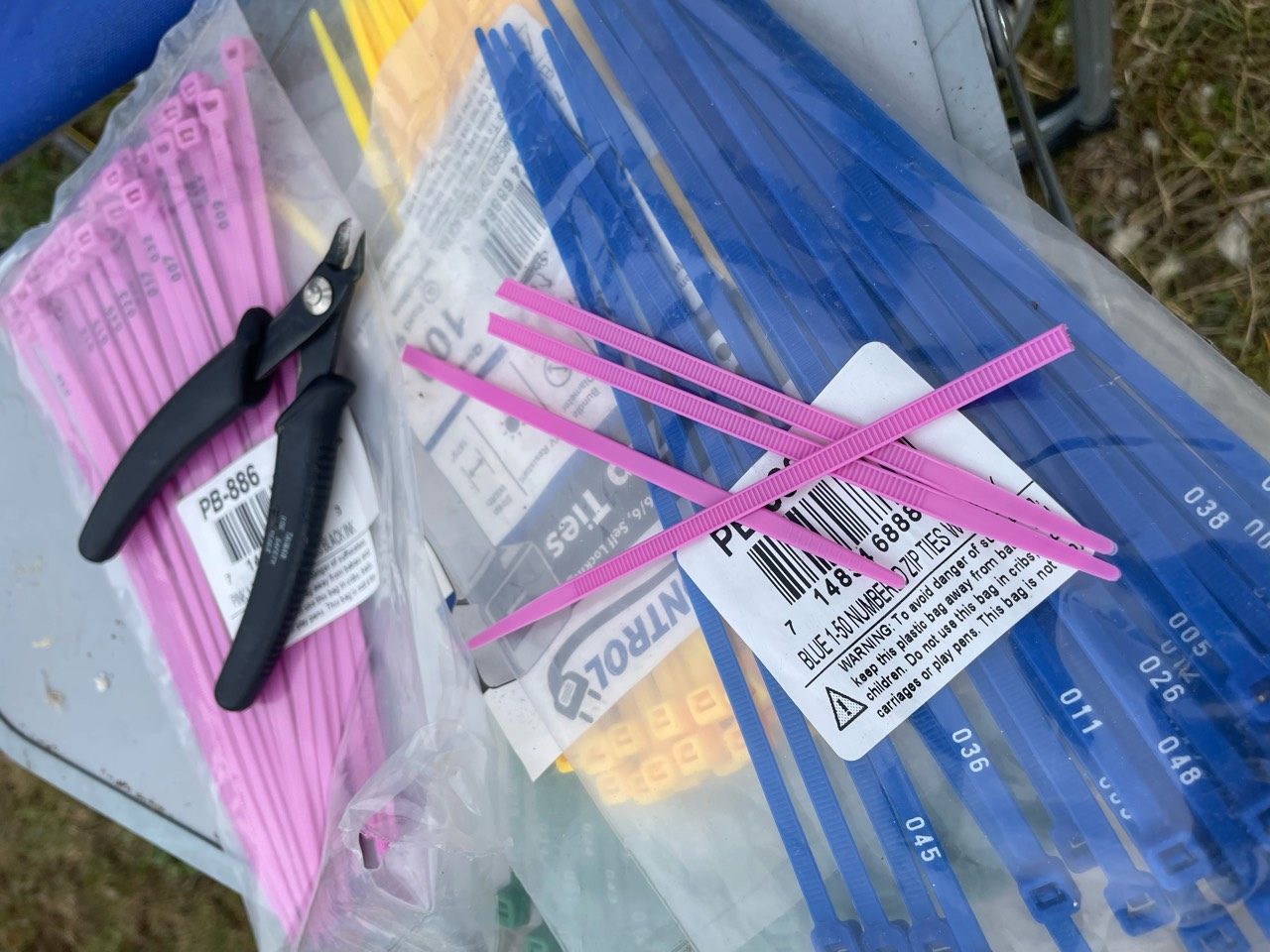
It’s important to buy quality bands that the numbers will not rub off from over time and can be read from a few feet away. Serialized bands are simply bands with unique numbers that can be assigned to each chicken in your flock. You could even go so far as having them personalized with the name of your farm.
Step-by-step guide: How to put a leg band on a chicken
Capture
The easiest way to capture a chicken is while they are roosting. But that’s usually when I am roosting too. If your chicken is easily spooked, jumpy—or if you’re just getting use to muckeling onto feathered raptors, let’s go over how to handle them. If you can plan to band early in the day you can simply keep the door between the coop and run closed. Each time you band a bird, you can simply toss it in the run to keep them straight.
Move slowly to corner them into a cage against a wall or fence. This works great if they aren’t used to it being there, especially if it’s corner they walk around often.
If you are awesome enough to capture two or more at a time it’s good to have a holding area ready. When I grab two, I set aside a large dog cage to set one in while I band the other. Then I release them both to the designated post-banding area.
Secure
Hold them tightly being sure to keep their wings tucked in. A football hold works well. If you’re on the ground or kneeling, secure them before standing. While you have them tucked tight, hold their ankles together in one hand so they cannot suddenly wiggle out and run off.
Transport
Bring them to an area where you are comfortable. A spot that is quiet, with dim light is helpful for anxious birds. Major plus if you can close the door in the area to entrap them in case the escape in the process. My chickens are pretty chill and I’m an experienced chicken wrangler, so I just have a lawn chair with a little built-in table mounted on the side. I’m comfy, the chicken is calm and my stuff is right where I can reach it, complete with a cupholder. Depending on the time of day, there’s room for a coffee—or a beer!
Position
A calm chicken is best for banding, and a health check. While keeping the wings tucked tightly in, slowly turn them on their side until they upside down centered in your lap with their head laying between your knees. Try your best to keep the feet from kicking and don’t let go of the ankles until they are calm.
If you have a nervous chicken or are new at this, it is best to wear long sleeves and pants to cover up with. They can really dig in.
Band
Now that you have a calm chicken in position in your lap you can loop the band over the foot and tighten it just enough so the small toe on the back can’t slip under it. If you are switching bands or moving to serials before removing slid colors, be sure to take a photo of the old and the new band while both are still on the chicken for your records. Then take a photo of its head and other identifying features you want to record in your sheet.
Each time you clip the end off a band, set it aside in a jar. Later on, when recording your information, you can make sure the number of band ends match the information you gathered.
Release
Now they must be placed in an area where they will not be in the way of capturing the rest of your flock. You also want to avoid confusing them with ones that have not been banded. If you mix them up, it’s easy to skip one and that could lead to a band becoming too tight and cause hard to your bird.
Record Keeping
For keeping tabs of flocks as a professional breeder I cannot stress enough to use Excel. And always keep a backup on a thumb drive.
This sheet screenshot below shows just banding information. This sheet displays info from their first serial banding at 14 weeks. The colored rows match the band color.

I weigh only the smallest and largest hens upon the first banding. It gives me a baseline. When it’s time to choose roosters I weigh all of them as part of the decision making process. I usually keep 2-3 per breed as long as they all get along. If they do not, the aggressor has to go into the crockpot or in a private stall if he’s too important for breeding purposes to cull. All of this should be included as time goes on.
PICKER birds are feather and tail pickers. They get orange bands on one ankle so they are easy to pull from the flock if you notice them reverting after reintroduction. Birds which are underweight or require a follow up get a purple band.
Originating lines, breeder information, lineage, and crosses in another sheet. I keep yet a third sheet for hatch dates and rates, age when purchased, and yet another sheet for production. The more data the better. Yes, I’m a science major and love to refer to stats.
